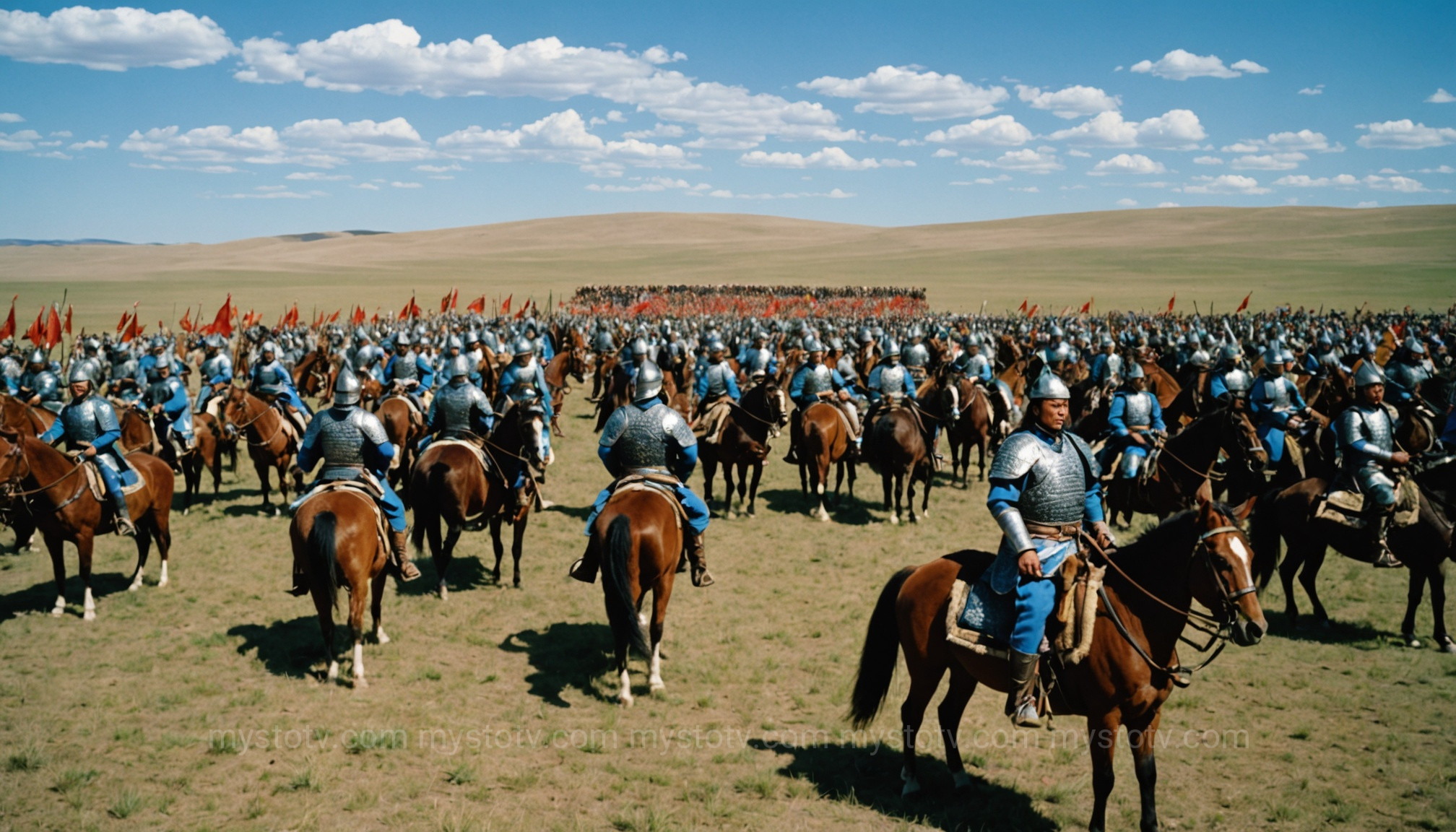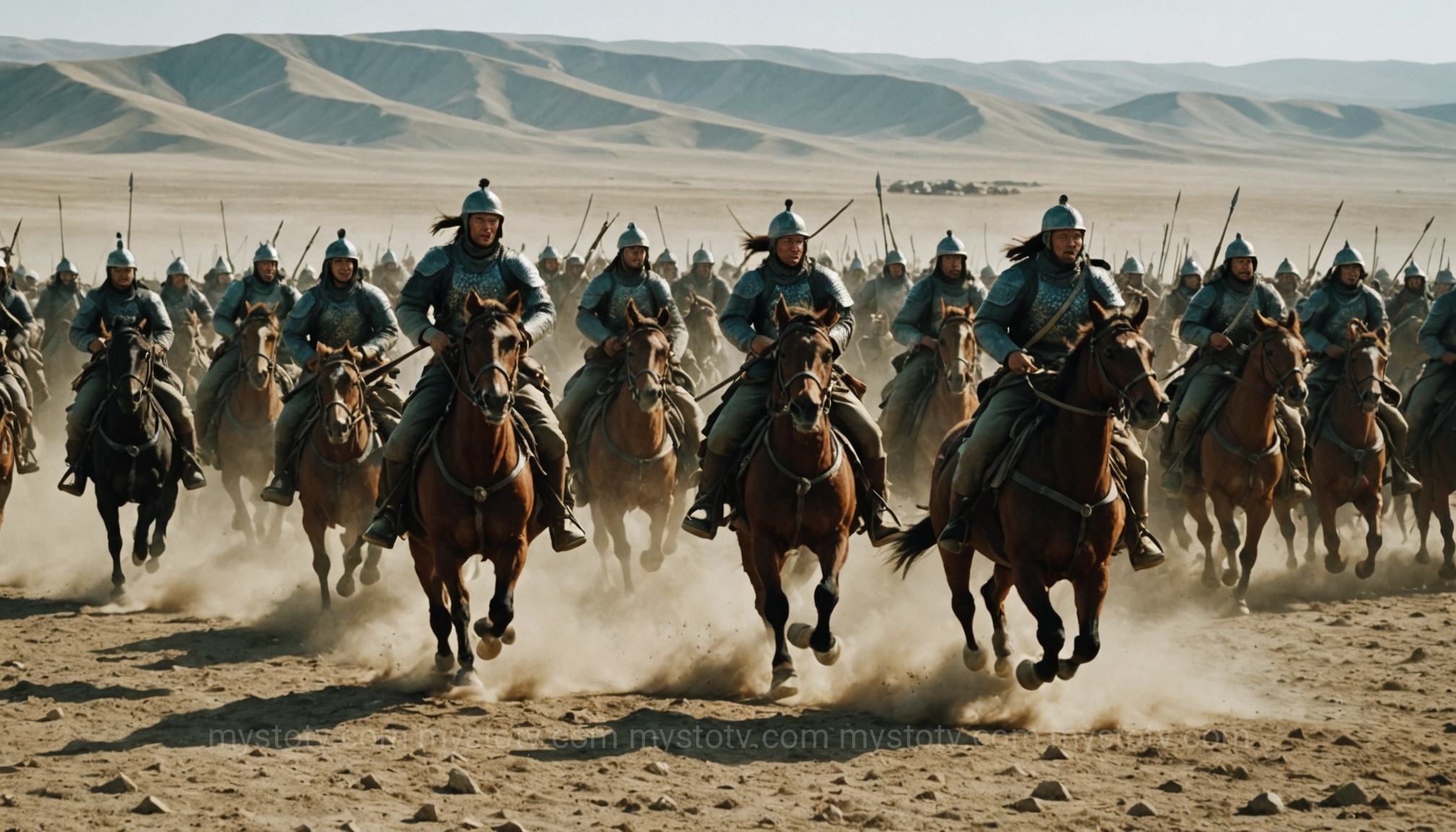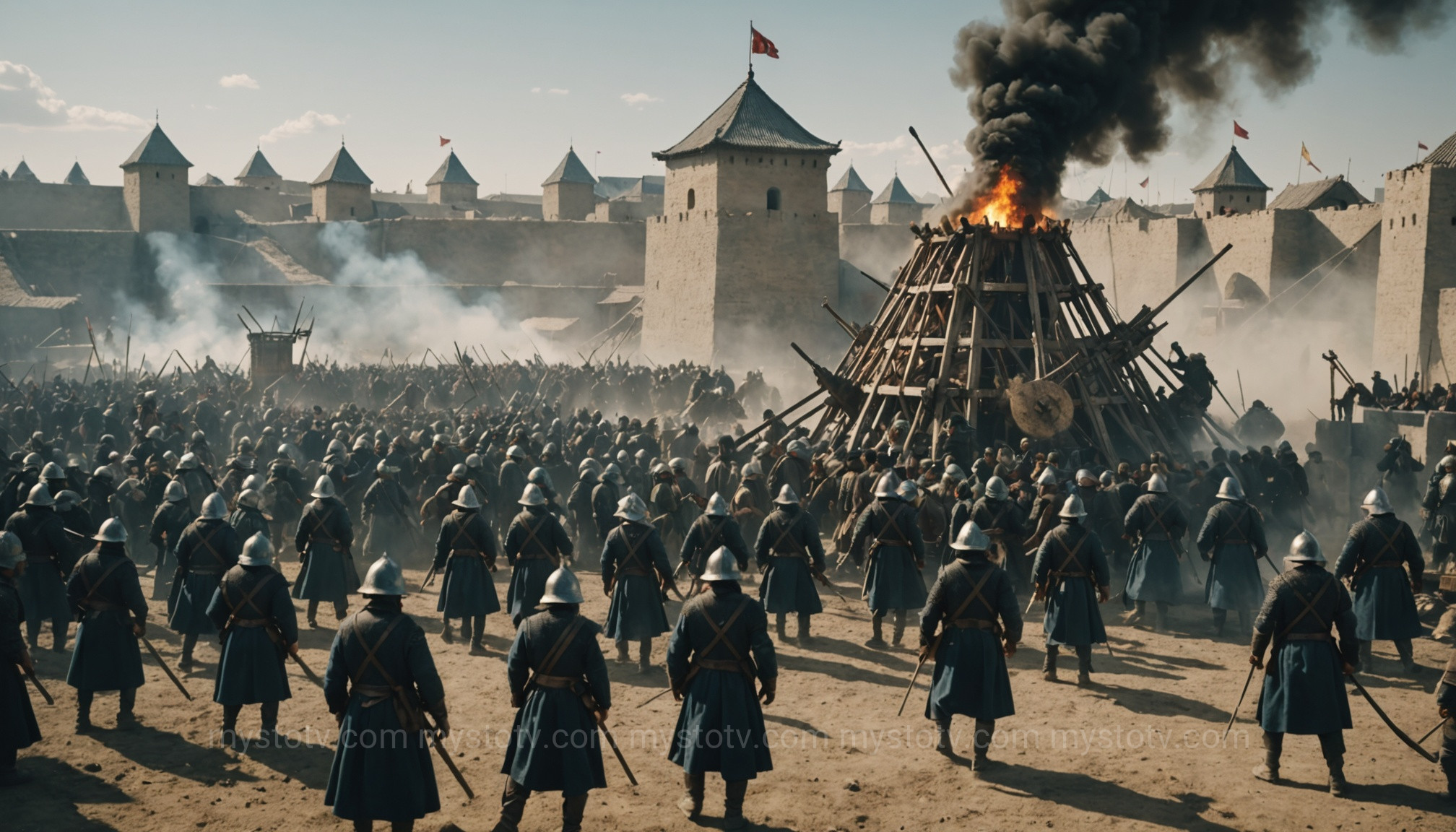I remember my first time playing a grand strategy game, likely Age of Empires II. I’d meticulously build my walled city, train my elite knights, and feel invincible. Then, from the fog of war, a swarm of horse archers would appear. They’d strike, retreat before my knights could connect, and then strike again from another angle. It was infuriatingly effective. It wasn't until years later, deep into history books, that I realized I wasn't being outsmarted by an algorithm; I was being humbled by a digital ghost. I was experiencing a simplified version of the devastatingly effective Genghis Khan tactics that reshaped the world. This wasn't just about numbers; it was a masterclass in psychology, logistics, and battlefield control that remains unparalleled.
Contents
- 1 The Foundation of Conquest: Revolutionary Genghis Khan Tactics in Army Organization
- 2 Mastering the Battlefield: Signature Genghis Khan Tactics in Open Combat
- 3 Beyond the Steppe: The Evolution of Genghis Khan Tactics for Siege Warfare
- 4 The Unseen Weapon: Psychological Warfare as a Core Component of Genghis Khan Tactics
- 5 Sustaining the Empire: The Logistical Genius Behind Genghis Khan Tactics
- 6 Frequently Asked Questions About Genghis Khan Tactics
- 7 References
- 8 Conclusion: The Enduring Legacy of Genghis Khan's Tactics
The Foundation of Conquest: Revolutionary Genghis Khan Tactics in Army Organization

Before a single arrow was fired, Genghis Khan’s greatest victory was won within his own camp. The success of his conquests was not born on the battlefield but forged in the radical restructuring of Mongol society and its military. These foundational Genghis Khan tactics transformed a collection of feuding nomadic tribes into the most disciplined and effective fighting force on Earth.
The Decimal System: Engineering Loyalty
The cornerstone of this revolution was the decimal system. Genghis Khan abolished the traditional, often volatile, tribal structures that had defined Steppe life for centuries. He reorganized his entire population, and thus his army, into groups of ten households.
- An Arban (10 men)
- A Zuun (100 men)
- A Myangan (1,000 men)
- A Tumen (10,000 men)
Crucially, he deliberately mixed members of different tribes and clans within these units. A man's loyalty was no longer to his old chieftain but to his nine comrades and the commander Khan himself had appointed. This brilliant social engineering severed old rivalries and fostered a new, unbreakable sense of brotherhood and collective responsibility. If one man from an arban deserted in battle, all nine of his comrades were executed. This harsh-but-fair system created a level of unit cohesion and discipline that no European feudal army could match.
A Pure Meritocracy
In the world Genghis Khan inherited, leadership was a birthright. He shattered this mold. Command was given based on skill, bravery, and loyalty, not aristocratic lineage. Famous generals like Jebe and Subutai rose from humble origins to become the Khan's most trusted commanders. This meritocratic approach ensured that the most capable individuals were leading his armies, fostering innovation and motivating every single soldier with the knowledge that their own valor could lead to greatness. This was one of the most transformative aspects of the early Genghis Khan tactics, creating a professional and highly motivated officer corps.
Mastering the Battlefield: Signature Genghis Khan Tactics in Open Combat
On the open field, the Mongol army was an orchestra of controlled chaos. Their movements were fluid, their purpose singular, and their methods terrifyingly effective. The classic image of the "Mongol Horde" as a mindless swarm is a profound misunderstanding of the intricate and well-rehearsed battlefield strategies they employed. The brilliance of these open-field Genghis Khan tactics lay in their ability to control the pace and location of every engagement.
The Dominance of the Cavalry Archer
The heart of the Mongol army was the cavalry archer. Mounted on a hardy Steppe pony and wielding a powerful composite bow, each warrior was a mobile artillery platform. This bow, made of laminated horn, wood, and sinew, could shoot with accuracy up to 350 meters, far outranging the bows of their sedentary adversaries. They could fire in any direction, even backwards while riding away—the famed "Parthian Shot." This allowed them to execute devastating hit-and-run attacks, peppering enemy formations with arrows while staying safely out of reach of heavy cavalry or infantry.
The Feigned Retreat: A Masterpiece of Deception

Perhaps the most famous of all Genghis Khan tactics was the feigned retreat. It was a high-risk, high-reward maneuver that preyed on the arrogance and poor discipline of opposing commanders. Mongol units would engage the enemy, fight briefly, and then break, seemingly in a panicked rout. This would often tempt a confident, larger force to break formation and give chase. The pursuing army, stretched out and disorganized, would be led into a pre-arranged kill zone. There, hidden Mongol reserves, often heavy cavalry, would crash into their flanks and rear, while the "fleeing" units would turn and attack from the front. The result was annihilation. This tactic was used to devastating effect against the massive Khwarazmian army and the Russian princes at the Battle of the Kalka River (1223).
Encirclement and Annihilation: The Tulughma
The Mongols rarely engaged in direct frontal assaults. Their preferred method was the Tulughma, or "standard sweep." This involved using a small central force to pin the enemy army in place. While the enemy was fixed, large detachments of light cavalry (the "horns") would sweep around the flanks. This was a patient, methodical process. They would surround the enemy, cutting off escape routes and reinforcement, then tighten the circle, showering the trapped army with arrows from all sides. Once the enemy formation was sufficiently weakened and thrown into chaos, the heavily armored Mongol cavalry would charge in to deliver the final, decisive blow.
Beyond the Steppe: The Evolution of Genghis Khan Tactics for Siege Warfare

The Mongols' greatest initial weakness was their inability to capture fortified cities. As nomadic warriors of the Steppe, they had no experience with siegecraft. A walled city could negate their primary advantages of mobility and archery. However, a cornerstone of the Genghis Khan tactics was relentless adaptation. What he couldn't do, he learned, often by force.
Learning from the Conquered
During his invasion of the Khwarazmian Empire, Genghis Khan faced dozens of large, well-defended cities like Samarkand and Bukhara. His solution was as pragmatic as it was brutal. He systematically captured engineers, artisans, and scholars from conquered territories, particularly from China and Persia, who were masters of siege warfare. These captives were forced to build and operate sophisticated siege engines for the Mongol army. Suddenly, the Mongols had access to a state-of-the-art arsenal of trebuchets that could hurl massive stones, catapults for flaming projectiles, and massive crossbows mounted on frames.
Innovative and Brutal Siege Methods
The Mongols quickly became masters of siegecraft, employing a terrifying variety of methods. They would use prisoners of war as human shields, forcing them to fill moats or push siege towers toward the walls. They were known to divert rivers to flood cities or undermine their foundations. At the siege of Nishapur, after his son-in-law was killed, Genghis Khan allegedly ordered that not even the cats and dogs be left alive, a story that perfectly illustrates the psychological terror he employed. This rapid evolution from nomadic raiders to the world's most effective siege army is a testament to the incredible adaptability inherent in the Genghis Khan tactics.
The Unseen Weapon: Psychological Warfare as a Core Component of Genghis Khan Tactics

The Mongol Empire was not won by the sword and bow alone. Perhaps the most potent weapon in their arsenal was fear. The Genghis Khan tactics of psychological warfare were so effective that they often conquered cities and nations without a major battle. Resistance was made to seem not just futile, but suicidal.
The Policy of Terror: Surrender or Die
The Mongol approach was brutally simple. When they arrived at a city, they would offer terms: surrender, accept Mongol lordship, and pay tribute, and your lives and property would be spared. If a city resisted, it faced complete and utter annihilation. This wasn't random cruelty; it was calculated policy. After a city that resisted was captured, the Mongols would often systematically massacre its population, sometimes building gruesome pyramids from the skulls of the dead. They would deliberately allow a few survivors to escape to spread the tale of horror to the next city down the road. This news, delivered by terrified eye-witnesses, was more effective than any diplomat. Faced with the choice between submission and obliteration, many rulers chose to open their gates.
Espionage and Propaganda
Long before the army arrived, Mongol spies and merchants would infiltrate enemy lands. They gathered crucial intelligence on political divisions, economic weaknesses, and defensive fortifications. They also actively spread propaganda and misinformation, exaggerating the size and ferocity of the Mongol army and stoking internal rivalries within the target kingdom. By the time the Mongol banners appeared on the horizon, the enemy was often already demoralized, divided, and terrified. This sophisticated use of "soft power" and intelligence was a hallmark of the multi-layered Genghis Khan tactics.
Sustaining the Empire: The Logistical Genius Behind Genghis Khan Tactics
An army, no matter how skilled, is useless if it cannot be supplied and commanded effectively across vast distances. The Mongol conquests spanned from the Pacific Ocean to the heart of Europe. Sustaining this momentum required a logistical and communications network of unprecedented genius. The brilliance of the Genghis Khan tactics extended far beyond the battlefield into the realm of imperial administration.
The Yam: The Imperial Nervous System

The single most important logistical innovation was the Yam system (or Örtöö). This was an elaborate network of relay stations established throughout the empire, spaced roughly 25-30 miles apart. Each station was stocked with fresh horses, food, and lodging for official riders. A Mongol messenger carrying an imperial decree could ride at full gallop from one station to the next, grab a fresh mount, and continue without delay. This system allowed information and orders to travel up to 200 miles a day—a speed unheard of anywhere else in the world until the invention of the telegraph. It was the nervous system of the empire, allowing the Khan to command his armies, receive intelligence, and administer his vast territories with incredible speed and efficiency.
An Army That Carried Its Own Supplies
Unlike sedentary armies that were tied to slow-moving baggage trains, the Mongol army was largely self-sufficient. Each warrior traveled with a string of several horses, allowing them to switch mounts and cover huge distances without tiring their animals. Their diet consisted heavily of dried meat and milk curds (aaruul), which were lightweight and long-lasting. They were expert hunters and foragers, able to live off the land they were campaigning in. This logistical independence gave them a strategic mobility that left their enemies perpetually on the back foot, unable to predict where the next blow would fall.
Frequently Asked Questions About Genghis Khan Tactics
While the major strategies are clear, many specific questions arise about the nuance and application of these world-changing tactics.
Were Genghis Khan's tactics purely brutal?
No. While undeniably brutal, especially towards those who resisted, the tactics were not senseless. The terror was a calculated psychological tool designed to minimize future resistance and bloodshed by encouraging surrender. Within the empire, Genghis Khan established a rule of law (the Yassa), religious tolerance, and safe trade routes (the Pax Mongolica). The brutality was a means to an end, not the end itself. The goal was conquest and control, and terror was simply one of the most effective tools in the Genghis Khan tactics playbook to achieve it.
How did the Mongol composite bow provide a tactical advantage?
The Mongol composite bow was a technological marvel. Its layered construction of sinew, horn, and wood gave it immense power and a range that outclassed nearly all contemporary bows. This allowed Mongol cavalry archers to dictate the terms of engagement. They could inflict casualties from a safe distance, weakening and disorganizing enemy formations before any close-quarters combat began. It forced heavier, slower armies into a terrible choice: charge and be led into a trap, or stand and be whittled down by a constant rain of arrows. This technological edge was central to the success of their hit-and-run and encirclement tactics.
Are Genghis Khan's tactics still relevant today?
Absolutely, though in different forms. Modern military doctrine still emphasizes principles the Mongols mastered: speed, surprise, flexibility, combined arms (the Mongol equivalent being light/heavy cavalry), and psychological operations. In the business world, concepts like "disruptive innovation" (shattering established norms like Khan did with tribal structure), understanding the competitive landscape (espionage), and creating agile, decentralized teams (the decimal system) echo the core principles of Genghis Khan tactics. The emphasis on speed, adaptability, and meritocracy remains a timeless lesson in leadership.
References
- Weatherford, Jack. Genghis Khan and the Making of the Modern World. Three Rivers Press, 2004.
- Turnbull, Stephen. Genghis Khan & the Mongol Conquests 1190-1400. Osprey Publishing, 2003.
- The Mongols in World History. Center for Global Education, Asia Society.
- May, Timothy. "The Mongol Art of War." Westholme Publishing, 2007.
Conclusion: The Enduring Legacy of Genghis Khan's Tactics
To conquer everything from the shores of the Pacific to the gates of Vienna required more than a horde of warriors. It required a revolution. The story of Genghis Khan is the story of a visionary who understood that an army's true strength lies not just in its weapons, but in its organization, its discipline, its speed, and its mind. The Genghis Khan tactics were a holistic system that integrated social engineering, meritocratic leadership, battlefield innovation, technological adaptation, sophisticated psychological warfare, and logistical supremacy.
He didn't just defeat his enemies; he systematically dismantled their ability to resist, often before the first charge was even sounded. By breaking down old tribal structures, promoting leaders based on merit, and mastering the arts of deception and terror, Genghis Khan created a military machine that was centuries ahead of its time. The shadow of his mounted archers may have faded from the steppes, but the principles behind the unbeatable Genghis Khan tactics continue to be studied, admired, and adapted in war rooms and boardrooms across the modern world.